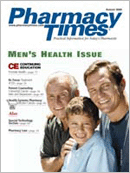Publication
Article
Pharmacy Times
Drug-Name Similarities and Dispensing Errors
Author(s):
Confirmation Bias
One of the most common medication errors occurs when2 drug names that look similar are confused. Human factorsexperts tell us that "confirmation bias" plays a role. Confirmationbias means that you are more likely to believe informationthat supports your view rather than informationthat does not. Another way of putting it is that you aremore likely to see what you are most familiar with, notwhat is really there.
For example, a pharmacist sent a report to the Institutefor Safe Medication Practices (ISMP) with a good example ofconfirmation bias. Several prescriptions written for"Sinequan" (doxepin) have been misread in his pharmacyas "Singulair" (montelukast). In this pharmacy, staff rarelysaw prescriptions written using the brand name Sinequan.Since the drug has long been available generically, "doxepin" has been the name most often used by prescribers. Onthe other hand, prescriptions for "Singulair" are seen commonly.Prescribers rarely use "montelukast" when prescribing.When handwritten, the 2 drug names (Sinequan andSingulair) can look similar.
Confirmation bias led staff to see the name that was mostfamiliar to them—Singulair—rather than what was actuallybeing communicated—Sinequan. The fact that these drugsare both given orally, often in the same 10-mg strength at asimilar dosing interval, adds to the potential for confusion.Since pharmacists preparing a medication may not be ableto recognize that they have selected the wrong drug, blamingthem for the error is fruitless. Instead, focus on ways ofimproving the system. Place reminders on containers or inyour computer system to alert staff about commonly confusedlook-alike drug names. Improve checking accuracy byhaving another pharmacy staff member view completedprescriptions. During counseling, verify the purpose of themedication with the patient. Encourage prescribers toinclude the purpose of each medication on prescriptions.
Mix-ups Involving Zetia
ISMP received a report from a patient who had been takingLipitor (atorvastatin) to treat hypercholesterolemia.Although her cholesterol levels were under control, herphysician changed her therapy to one of the newer agents,Zetia (ezetimibe) 10 mg daily, and phoned the prescriptionin to the patient's pharmacy. The pharmacist transcribedthe telephone order correctly, but another pharmacist misreadthe transcription and dispensed the antihypertensiveZestril (lisinopril) 10 mg. The patient obtained 3 refills, eachtime receiving the wrong medication. Meanwhile, herblood cholesterol level increased.
ISMP has also heard about a mix-up between Zetia andthe beta-blocker Zebeta (bisoprolol fumarate). Zetia 10 mgwas prescribed, but Zebeta 10 mg was dispensed to thepatient. At the time, the pharmacist was unfamiliar withZetia. Consequently, the physician's handwritten prescriptionappeared to be the more familiar drug Zebeta. Fortunately,the error was discovered after the patient took onlya few doses. The patient experienced hypotension, but nopermanent harm resulted. In yet another report, an orderfor Zetia was misinterpreted as Bextra (valdecoxib).
In each of these cases, similarities in the dose, route, andfrequency contributed to the errors. In addition, several lettersare the same in each drug name. When combined with poorhandwriting, these similarities can lead to mix-ups. Encouragepatients to check their medication bottles and read patientinformation leaflets before taking a medication.
Dr. Kelly is the editor of ISMP Medication Safety Alert!Community/Ambulatory Care Edition.
Subscribe to Newsletter
Pharmacy Times and the Institute for Safe Medication Practices(ISMP) would like to make community pharmacy practitioners awareof a publication that is available.
The ISMP Medication Safety Alert! Community/Ambulatory CareEdition is a monthly compilation of medication-related incidents,error-prevention recommendations, news, and editorial content designedto inform and alert community pharmacy practitioners topotentially hazardous situations that may affect patient safety. Individualsubscription prices are $45 per year for 12 monthly issues.Discounts are available for organizations with multiple pharmacysites. This newsletter is delivered electronically. For more information,contact ISMP at 215-947-7797, or send an e-mail message tocommunity@ismp.org.
Report Medication Errors
The reports described here were received through the USP MedicationErrors Reporting Program, which is presented in cooperation with theInstitute for Safe Medication Practices (ISMP). ISMP is a nonprofitorganization whose mission is to understand the causes of medicationerrors and to provide time-critical error-reduction strategies to the healthcare community, policy makers, and the public. Throughout this series,the underlying system causes of medication errors will be presented tohelp readers identify system changes that can strengthen the safety oftheir operation.
If you have encountered medication errors and would like toreport them, you may call ISMP at 800-324-5723 (800-FAILSAFE)or USP at 800-233-7767 (800-23-ERROR). ISMP's Web address iswww.ismp.org.

Newsletter
Stay informed on drug updates, treatment guidelines, and pharmacy practice trends—subscribe to Pharmacy Times for weekly clinical insights.






